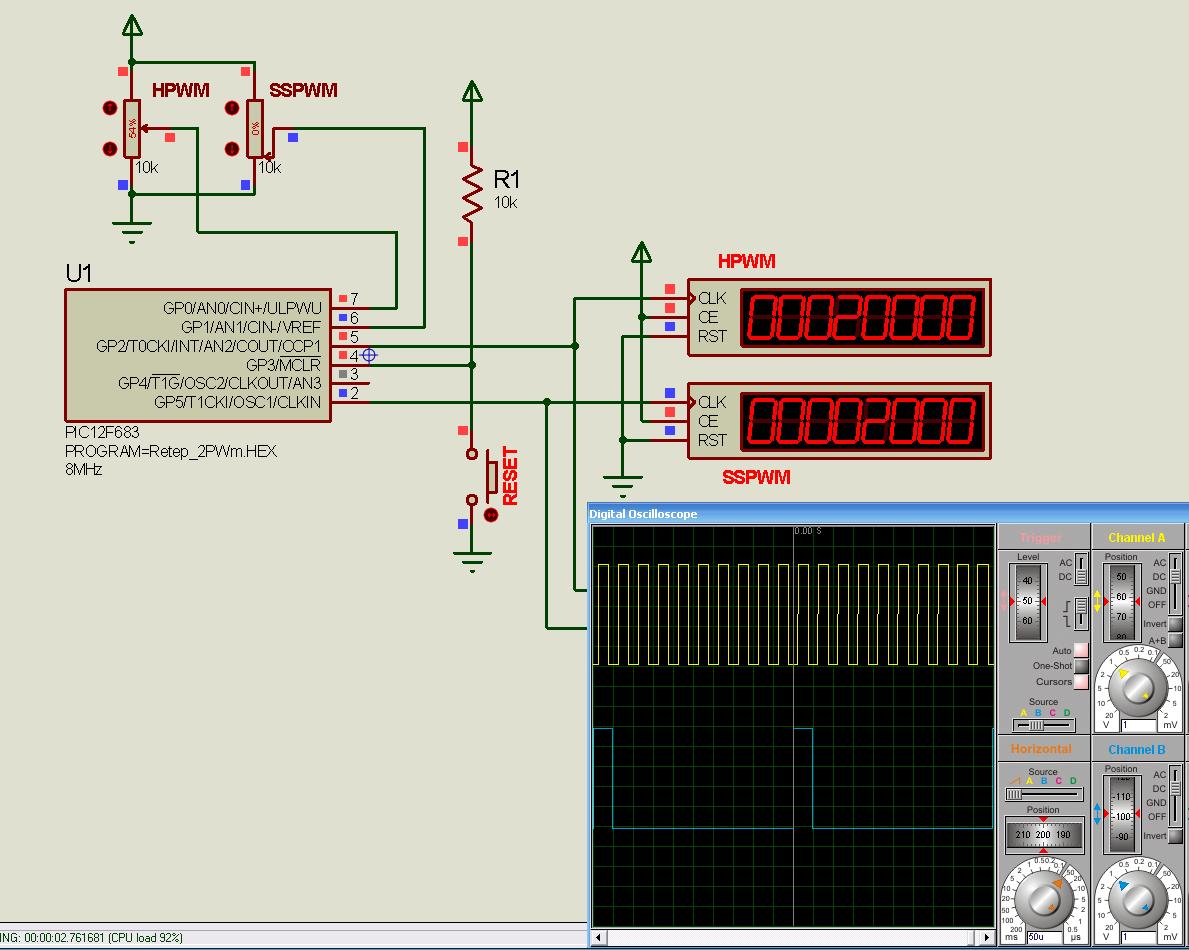
Originally Posted by
retepsnikrep

Thanks for the reply. I do plan on doing something with this in due course.
Great confidence I have now ... NOT!
Oh well, more things to do tomorrow I have ....
Tonight, I do this ...
Next year, you may try it.

Code:
DEFINE OSC 8
SPWMpin var GPIO.5 ' Output Pin for SSPWM
INCLUDE "SSPWM.inc" ' include the SSPWM module
;----[Constants]------------------------------------------
HPWMfreq CON 20000
Freq = 2000 ' Set Frequency of SSPWM (word)
;----[Variables]------------------------------------------
HPWMduty VAR BYTE
LastHPWMduty VAR BYTE
SSPWMduty VAR BYTE
;----[Initialize]-----------------------------------------
OSCCON = %01110000 ' 8Mhz
ANSEL = %000011 ' AN0 and AN1 ANALOG
DutyCycle = 10 ' Set Duty Cycle of SSPWM
gosub StartSPWM ' Start SSPWM @ Freq/DutyCycle
HPWM 1, 127, HPWMfreq ' Start 20Khz PWM @ 50%
;----[Main Program Loop]---------------------------------
Main:
ADCIN 0, HPWMduty
ADCIN 1, SSPWMduty
IF HPWMDuty != LastHPWMduty THEN
LastHPWMduty = HPWMDuty
HPWM 1, HPWMDuty, HPWMfreq
ENDIF
DutyCycle = SSPWMduty*80/256+10 ' scale SSPWM dutycycle
gosub SetSPWM ' Change SSPWM DutyCycle
GOTO Main
Dutycycle of the 2Khz is 10% in the image.
Both dutycycles are adjustable from the pots, and works from 10% to 90%, (0 to 100% for the HPWM).
Don't forget to comment the wsave vars not used by the 683 in the .inc file.
Happy Holidays.









 ) - I need single channel SPWM fixed 95% duty with 85 Hz from 12F683 to drive LEDs (and perhaps extend their life)?
) - I need single channel SPWM fixed 95% duty with 85 Hz from 12F683 to drive LEDs (and perhaps extend their life)?


Bookmarks